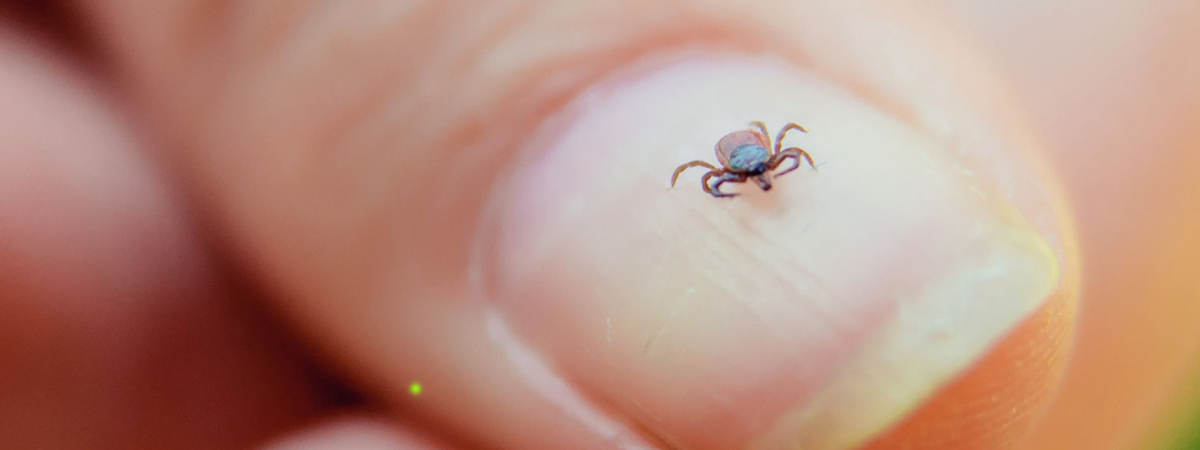As the 2024 Little League season gets into full swing, it’s important to keep an eye on insects that can cause harm, not only to fields, but to people. One of the biggest threats, other than mosquitoes, is the tick. These tiny pests (usually about three to six millimeters in length) can pose a real hazard to health, since they are capable of transmitting serious diseases like Lyme disease and Rocky Mountain spotted fever.
Ensuring the safety of young athletes and the visitors who come to see them play means taking proactive steps to prevent and combat tick infestations. Understanding the life cycle of ticks, when they’re active, and effective methods of control—both cultural and chemical—is crucial for reducing the risk of tick bites and creating a safe environment for kids to enjoy America’s favorite pastime.
When Ticks Become Active
Ticks thrive in warm, moist environments and are most active during the spring and summer months. However, they can appear as early as March when the ground begins to thaw and stick around into late fall. In some regions, especially those with milder winters, ticks can remain active year-round. Generally speaking, ticks are most commonly encountered from April to July, a time period when many Americans are outdoors for leisure and to watch sporting events.
When Ticks Go Away
Tick activity begins to decline in late fall as temperatures drop. However, it’s important to note that ticks do not completely disappear with the first frost. Some species, particularly the black-legged tick (most commonly known as the deer tick), can remain active in their adult phase during the winter, so long as the temperature is above freezing and the ground is not frozen or covered in snow. Of course, by the time the ground freezes, the Little League season will long be over. Rather than letting ticks run their course until winter weather appears, controlling them will help make play safer for everyone on the field and spectating in the grass.
Cultural Tick Control Methods
There are several cultural practices that can help sports field managers combat ticks on the field and the sports complex in general.
Keep turf cut short and keep landscapes tidy. The field itself has to be cut to its proper length, but pay close attention to spectator areas and other areas with turf cover that may not get as much attention. Ticks like to hide in long grass and overgrown areas that they can easily ascend and use to latch onto people’s legs. Regularly mowing and trimming these areas can keep tick habitats from thriving.
Removing leaf debris and clearing brush from areas around the field can diminish the number of places ticks can hide and breed.
Placing wood chips or gravel between lawns and wooded areas can discourage tick migration into fields, acting as a barrier of sorts.
Controlling Ticks With Insecticides
Sports field managers can provide long-term protection by treating the areas around their fields and other turfgrass areas with insecticides. Here are a few insecticides that can effectively repel and control ticks:
EcoVia MT harnesses the power of natural oils and 2-phenylethyl propionate (10.5%) to provide quick control of and residual repellency against mosquitoes and ticks. As an eco-friendly, botanical option, EcoVia is safe for outdoor use on all types of vegetation. It also boasts a low use rate; Mix at a rate of 0.33 to 0.66 fluid ounces per gallon of water to control ticks, then apply until the treated area is thoroughly wet. Apply every 30 days or as needed.
Talstar Professional, containing bifenthrin (7.3%), controls over 75 types of insects, including ticks. It has a broad label and sets itself apart as a water-based, non-irritating solution that leaves no residue or damage to plants. Talstar Professional does not emit odors and has no phytotoxicity risk, making it ideal for use in sensitive environments without compromising on efficacy. Apply Talstar Professional as a coarse, low-pressure spray until the area has been covered.
Aloft LC SC combines clothianidin (24.7%) and bifenthrin (12.3%) to offer dual-action preventative and curative control against a range of turfgrass pests, including ticks. Aloft LC SC should be applied at a rate of 0.27 to 0.54 fluid ounces per thousand square feet. Use higher spray volumes when treating areas with dense ground cover or heavy leaf litter. Aloft can control adult ticks, as well as larvae and nymphs.
To learn more about tick control and the insecticide products we offer, reach out to your ATS rep.












